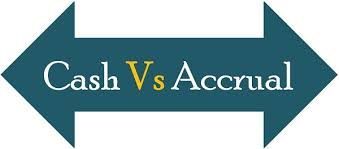
Category: Uncategorized


Basic accounting principles and understanding financial statements

First New Tax Legislation in a Generation
With the new tax bill ready to be signed into law by the President, we wanted to give you a recap of the major provisions.
The final bill still leans heavily toward tax cuts for corporations and business owners. But it also expands or restores some tax benefits for individuals relative to the earlier bills passed by the House and Senate.
The individual provisions will expire by the end of 2025, but most of the corporate provisions would be permanent.
Below you will find the key provisions:
For Individuals
Many individuals will experience lower tax rates in 2018. See table to the left which will show the decrease for many tax brackets and the fact that there will still be seven tax brackets.
Nearly doubles the standard deduction:
For single filers, the bill increases it to $12,000 from $6,350 currently; for married couples filing jointly it increases to $24,000 from $12,700.
The net effect: The percentage of filers who choose to itemize would drop sharply, since the only reason to do so is if your deductions exceed your standard deduction.
Eliminates personal exemptions:
Today you’re allowed to claim a $4,050 personal exemption for yourself, your spouse and each of your dependents. Doing so lowers your adjusted gross income and thus your tax burden. You will see these exemptions eliminated in 2018.
Caps state and local tax deduction:
The final Bill limits the combined deduction for state/local and real estate taxes to $10,000. Currently taxpayers who aren’t subject to the Alternative Minimum Tax (AMT) can deduct these expenses as itemized deductions.
What to do:
If you are not subject to AMT ensure that you pay all of you 2017 state and real estate taxes in 2017.
Expands child tax credit:
The credit will be doubled to $2,000 for children under 17. It also will be made available to high earners because the bill would raise the income threshold under which filers may claim the full credit to $200,000 for single parents, up from $75,000 today; and to $400,000 for married couples, up from $110,000 today. Like the first $1,000 of the child tax credit, $400 of the additional $1,000 would also be refundable, meaning a low- or middle-income family will be able to have the money refunded to them if their federal income tax liability nets out at zero.
Creates temporary credit for non-child dependents:
The bill would allow parents to take a $500 credit for each non-child dependent whom they’re supporting, such as a child 17 or older, an ailing elderly parent or an adult child with a disability.
Lowers cap on mortgage interest deduction:
If you take out a new mortgage on a first or second home you would only be allowed to deduct the interest on debt up to $750,000, down from $1 million today. Homeowners who already have a mortgage would be unaffected by the change. The bill would no longer allow a deduction for the interest on home equity loans. Currently that’s allowed on loans up to $100,000.
What to do:
If you are currently paying interest on a home equity line of credit, consider paying it down because the interest will no longer be deductible beginning in 2018.
Curbs who’s hit by AMT:
The final version keeps AMT, but reduces the number of filers who would be subject to it by raising the income exemption levels to $70,300 for singles, up from $54,300 today; and to $109,400, up from $84,500, for married couples.
Preserves smaller but popular tax breaks:
Earlier versions of the bill had proposed repealing the deductions for medical expenses, student loan interest and classroom supplies bought with a teacher’s own money. They also would have repealed the tax-free status of tuition waivers for graduate students. The final bill, however, preserves all of these as they are under the current code. And it actually expands the medical expense deduction for 2018 and 2019.
Doubles Estate Tax Exclusion:
Currently set at $5.49 million for individuals, and $10.98 million for married couples. The exclusion will be increased to $10 million for individuals and $20 million for married couples.
What to do:
Review your estate plan and utilize annual-exclusion gifts
Slows inflation adjustments in tax code:
The bill would use “chained CPI” to measure inflation, which is a slower measure than is used today. The net effect is your deductions, credits and exemptions will be worth less — since the inflation adjusted dollars defining eligibility and maximum value would grow more slowly. It also would subject more of your income to higher rates in future years than would be the case under the current code.
Eliminates mandate to buy health insurance:
There would no longer be a penalty for not buying insurance. While long a goal of Republicans to get rid of it, the measure also would help offset the cost of the tax bill. It is estimated to save money because it would reduce how much the federal government spends on insurance subsidies and Medicaid. The Congressional Budget Office expects fewer consumers who qualify for subsidies will enroll on the Obamacare exchanges, and fewer people who are eligible for Medicaid will seek coverage and learn they can sign up for the program. But policy experts also note that the mandate repeal could raise premiums because more healthy people might decide to skip buying insurance.
For Businesses and Corporations
Lowers tax burden on pass-through businesses:
The tax burden on owners, partners and shareholders of S-corporations, LLC’s and partnerships — who pay their share of the business’ taxes through their individual tax returns — would be lowered by a 20% deduction, somewhat less than the 23% called for in the Senate-passed bill. The 20% deduction would be prohibited for anyone in a service business — unless their taxable income is less than $315,000 if married ($157,500 if single).
What to do:
Consult with your tax advisor to see if your current form of business makes the most sense going forward. This is something that a lot of businesses should study beginning in 2018. Nothing to do in 2017.
Includes a rule to prevent abuse of the pass-through tax break:
If the owner or partner in a pass-through also draws a salary from the business, that money would be subject to ordinary income tax rates. But to prevent people from re-characterizing their wage income as business profits to get the benefit of the pass-through deduction, the bill would place limits on how much income would qualify for the deduction. Tax experts nevertheless have warned that this kind of anti-abuse measure still presents taxpayers with a lot of opportunities to game the system, and favors passive owners of a business over active owners who actually run things.
Substantial cuts to corporate tax rates:
The bill cuts the corporate rate to 21% from 35%, starting next year. That’s somewhat higher than the 20% called for earlier. The bill would also repeal the alternative minimum tax on corporations.
Change how U.S. multinationals are taxed:
Today U.S. companies owe Uncle Sam tax on all their profits, regardless of where the income is earned. They’re allowed to defer paying U.S. tax on their foreign profits until they bring the money home. Many argue that this “worldwide” tax system puts American businesses at a disadvantage. That’s because most foreign competitors come from countries with territorial tax systems, meaning they don’t owe tax to their own governments on income they make offshore.
179 Depreciation limits doubled:
For property placed in service beginning after December 31, 2017, the maximum amount a taxpayer may expense under code section 179 is increased from $500,000 to $1 million.
Temporary 100% Cost Recovery of Qualifying Business Assets
Currently known as Bonus Depreciation, a 100% (currently 50%) first-year deduction for the adjusted basis is allowed for qualified property acquired and placed into service after September 27, 2017, and before Jan 1, 2023. The additional first-year depreciation deduction is allowed for new and used property (previously only applied to new property).
If you are not sure if this will effect your taxes, the best advice we can give you is to contact us. Whether you email Susan Hopkins at susan@marshalljones.com or schedule an appointment with Kristen Hughes 404-231-2001, we would be happy to discuss your individual situation.

IRS Issues 2018 Work Plan for Tax Exempt Organizations
The Tax Exempt and Government Entities (TE/GE) division of the IRS recently issued its FY 2018 Work Plan, which builds upon the agency’s ongoing mission to refine, realign and improve their education and examination methods. In 2017, the agency implemented data analytics and knowledge management strategies to target organizations with a high likelihood of noncompliance, and the 2018 plan continues this practice. Facing budget cuts and a declining workforce, the agency reiterated its mission, first stated in last year’s work plan, of transparency, efficiency and effectiveness.
For nonprofits preparing for 2018 now is the ideal time to review the work plan and develop a plan in the case of an IRS audit.
Fiscal Year 2018 Initiatives
For fiscal year 2018, the IRS has outlined the following compliance strategies:
- Examine entities that state they are supporting organizations and filed the Form 990-N
- Examine organizations that have operated as for-profit entities in the past, but now operate as 501 (c)(3) organizations
- Examine organizations that show signs of providing private benefit or inurement to individuals or private entities though contracts with individuals or other arrangements such as partnership agreements
If any of these attributes apply to your organization, it is crucial to ensure your financial information is organized and correct, to prepare for the possibility of an audit.
Tax Gap Issues in the Spotlight
In 2016 and 2017, the agency identified the tax gap as a key issue area. In 2016, the IRS conducted almost 5,000 examinations, with a large portion of these examinations encompassing tax gap issues, such as employment tax and unrelated business income tax. For 2018, these tax areas remain an area of concern. Organizations should be aware of the following:
- Unrelated Business Income: Organizations should review materials as they relate to gaming, non-member income, expense allocations, net operating losses, rental activity, advertising, debt financed property rentals and investment income.
- Employment Tax Issues: Including unreported compensation, accountable plans, worker reclassifications, noncompliance with FICA, FUTA and backup withholding requirements. In recent years, the agency has demonstrated their seriousness in pursuing these issues and leveraged the knowledge and expertise of specialists from the Federal State and Local government function. This partnership improved their ability to detect and resolve employment tax issues. As part of the FY 2018 plan, the employment tax specialists will now work as part of the same unit as the exempt organization specialists.
Due to the prevalence of tax gap issues, the agency plans to release an issue snapshot addressing the unrelated business income tax. A knowledge management product on employment tax issues is also planned to be released to help both IRS examiner and organizations get up to speed on these key issues.
Filing a form incorrectly, or making a reporting error, will not necessarily result in an audit or examination. The agency will continue to use compliance checks to determine whether an organization is keeping proper records and reporting the required information. Compliance checks allow an organization to revise filed information and tax returns, but they are not an examination or audit. With the tax gap being a major issue for many nonprofits, the first step in resolving many tax gap problems will be a compliance check.
Data and Guidance Initiatives
In May 2017, TE/GE brought online a Compliance Planning & Classification unit, streamlining processes and providing a comprehensive approach to identify and monitor compliance risks using data analytics. The agency will continue to implement data gathered from form 990, 990-EZ and 990-PF. Utilizing data analytics for increased efficiency will continue, as in FY 2018, the agency will launch a Compliance Strategy Tool and an Internal Submission Portal. These tools will facilitate crowdsourcing on areas of non-compliance. With a data-driven approach, agents will become faster and more efficient in their auditing process.
The IRS has focused on providing online guidance and knowledge materials with the expectation that this will improve compliance and increase the number of correctly submitted documents. Not only will this guidance aid organizations in the proper process for exemption filing, but it will also act as a training resource for agents, allowing for the quick resolution of issues.
Best Practices for Organizations
With the IRS work plan released, organizations can start preparing for the year ahead. If there are any uncertain tax positions, it is best to sort them out sooner rather than later. Preparation is key.
After analyzing what to expect for the coming year and identifying any potential issues, organizations should ensure they have properly documented all financial activity. A routine audit means 3-years of documentation will be examined. However, in certain circumstances, documents from years prior may be requested. For example, if an organization is offsetting current income with a loss generated two decades ago, the IRS can request information from the year of the loss. In the event your organization must challenge an IRS outcome, documentation will be crucial. Without proper documentation, it will be difficult to make a strong case.
If you need help with the application, understanding, or have further questions regarding this standard, please call 404-231-2001, ask for Nathan, or email nathan@marshalljones.com

Will the IRS reject your tax return next year?
In the latest signal that the Affordable Care Act is still law, the Internal Revenue Service said this week that it is taking steps to enforce the most controversial provision: the tax penalty people face if they refuse to obtain health insurance.
Next year, for the first time, the I.R.S. will reject your tax return when filed electronically if you do not complete the information required about whether you have coverage, including whether you are exempt from the so-called individual mandate or will pay the penalty. If you file your tax return on paper, the agency said it could suspend processing of the return and delay any refund you might be owed.
The I.R.S.’s guidance makes it clear that taxpayers cannot simply ignore the Affordable Care Act. While the penalty applies only to people without insurance, all taxpayers are required to say whether they have coverage.
Legal experts say the I.R.S. has been clear that the law was in effect, despite repeated efforts by Mr. Trump and Republican lawmakers to repeal it. Congress would have to specifically repeal the mandate, they say, even if the administration has significant leeway over how aggressively it enforces it.
But there has been substantial confusion among taxpayers and insurers. Many insurance companies raised their rates for next year’s plans because they were worried the administration would essentially stop penalizing people who refused to buy coverage, leading to fewer enrollments.
People may have also mistakenly believed they did not have to comply with the law’s reporting requirements. The new guidance suggests taxpayers will now face a sharp reminder that they need to provide this information, when they go to file a return electronically or submit the appropriate paperwork to get any refund they are due.
Under the law, an individual who does not have insurance can face a penalty of $695 a year for an individual, up to a maximum of $2,085 for a family or 2.5 percent of your adjusted gross income, whichever is higher. People are exempt from the penalty if they have too little income or if the lowest-priced coverage available costs them more than 8.16 percent of their household income.
The I.R.S. had initially held off rejecting returns because the law was new, but then it delayed its plans to assess the effect of the executive order. In evaluating its stance, the agency may have decided the requirement eases the burden on taxpayers by making it clear they need not worry if they have insurance or are exempt from the penalty. While the agency is taking steps to be sure it collects all the information necessary to levy the penalty, it could also take a very lenient view of how aggressively it goes after anyone who does not sign up.

Why Financial Statements Prepared by Outsourced Accounting Services Can Be More Reliable
When it comes to your company’s success, accurate financial information is critical to making the correct business decisions. Knowing your margins and having visibility into cash flow will allow you to elevate your company to the next level. That’s why your financial statements need to go beyond just the basic requirements.
Your company will benefit from a knowledgeable and experienced accounting team. If you can’t commit to hiring a dedicated crew just for financials, outsourcing your accounting functions is one of the most beneficial business decisions you can make. When you partner with Marshall Jones, we’ll provide you with all the assistance and financial expertise you need without having to hire a full-time staff.
Embracing Financial Proficiency
When companies lack exclusive accounting teams, other individuals like business owners or managers with other primary responsibilities must handle the daily bookkeeping. Without a dedicated individual or crew maintaining financials, many essential tasks and functions get overlooked:
- Low prioritization: When accounting is not an employee’s primary job function, financial tasks sometimes become a low priority. A lack of emphasis can increase the likelihood of errors.
- Limited time: When someone has other duties to perform in addition to the financials, it can lead to inaccuracies and errors as they consistently rush through both of their jobs.
- Unqualified personnel: The employee handling the financials may not have the technical knowledge about the latest standards and tax laws to perform the job effectively.
At Marshall Jones, our team of certified public accountants and advisors can supplement or manage all of your accounting responsibilities expertly and accurately for as long as you need us, allowing you to refocus your energies on your business’s core functions.
Benefits of Outsourced Accounting
When you outsource your financials to a reliable accounting firm, you’ll benefit from the experience of professionals who can take the financial stress off your plate and free up your time. The valuable insight an outsourced team provides can help guide your business decisions. Among the added benefits of hiring an outsourced accounting service are:
- Automation: Outsourced accounting services often integrate directly into your payroll, inventory, sales and other bookkeeping systems. Each time a transaction is made, your accounting systems update automatically. This information virtually eliminates the possibility of human error in data entry.
- Expert review: Instead of reactively looking back into your financial statements for discrepancies, you’ll have a clear understanding of the implications of your business decisions. This knowledge allows you to be proactive and gives you a dynamic view of the steps needed to grow your business and profits.
- Best practices: A fresh set of eyes with advanced accounting expertise can provide an advantage when it comes to analyzing your financials. While old, inefficient methods might be enough to get by, an entire team dedicated to your operation will boost efficiency and accuracy.
Contact Marshall Jones for Your Outsourced Accounting Needs Today
At Marshall Jones, our certified public accountants and advisors have provided outsourced accounting and other financial services to the Metro Atlanta area for more than 35 years. Our mission is to deliver superior service to our clients with the highest integrity and technical competency. Contact us today to find out how we can help with your company’s financial needs!

Five Accounting Technology Innovations that Every CFO Should Be Aware of
In a survey conducted by Robert Half Management Resources, 41 percent of CFOs cited technology as a major source of stress in their jobs, saying that innovations in accounting are progressing so rapidly that it’s difficult to keep up. Becoming familiar with the biggest trends minimizes the struggle with increased efficiency and a more streamlined approach to managing corporate finances.
Cloud-Based Accounting
The cloud computing trend that has grown increasingly popular in other areas of business is making its way into the realm of accounting. Cloud applications can handle everything from payroll and invoicing to taxes and benefit payments. All financial information is updated as soon as changes occur and can be monitored and managed from a user-friendly administrator dashboard. Automation handles tasks that previously took time away from more important duties. Moving accounting processes to the cloud also removes a burden from the IT department by shifting the responsibility for software management and updates to the cloud service provider.
Complete Integration
Customized integration solutions are changing the way businesses operate, and this is proving to be a boon to accounting executives. In the past, accuracy was a major concern, especially when financial information was transferred between departments. One small error could compound to create serious problems down the line, necessitating corrections that wasted valuable company time.
Today, it’s possible to link together ERP, CRM and CMS software as well as legacy applications to create a unified environment where authorized users from every department can access the information they need at any time. Alerts can be set up to call attention to any errors that do occur, preventing the “snowball effect” that cripples productivity.
Manual Entry Minimized with OCR
Using an integrated system already cuts down on the amount of manual entry required to manage company finances, but the advent of optical character recognition (OCR) software is simplifying the process even more. Advances in this technology allow companies to use scanners or even the cameras on mobile devices to capture printed financial information such as receipts and invoices and translate the text into digital files. Improved accuracy has cut down on the rate of error during this translation, and future updates promise to further improve the procedure’s efficiency.
New Solutions in Tax Software
With payroll, expenses, receivables, payables and all other pertinent financial information available through an integrated, cloud-based solution, tax time becomes much less stressful. Modern innovations in accounting and tax software allow CFOs to take advantage of the correlated data collected throughout the year to ensure accuracy for all tax forms and payments. Real-time data updates prevent errors caused by outdated reports and missed entries.
Whether a company pays quarterly or annually, precision in tax reporting is essential. Mistakes can lead to over- or under-payment or, in the worst case, an audit. Most tax software programs make the process easy with tools that handle details such as deductions and alerts that point out potentially costly data entry errors.
Remote access is one of the greatest benefits of modern accounting technology. CFOs and other financial professionals are no longer required to be in an office to input new data, update tax information or run reports. With the right software solution and related mobile applications, it’s possible to handle a company’s finances from anywhere. Data entered by employees at the office is immediately accessible via the cloud. Other members of the mobile workforce can record expenses or payments on the go. This flexibility gives CFOs the up-to-the-minute information they need to stay on top of the financial health of the business.
Today’s CFOs recognize the value of these and other emerging accounting technologies. Understanding how to implement and utilize the right combination of systems results in a more stable financial state and improved corporate growth. Modern accounting technologies are efficient, scalable and secure, providing just what CFOs need to ensure success.

How the Equifax Breach Can Impact Your Tax Return
After the Equifax data breach, year-end tax planning may be even more important. Social Security numbers were among the data exposed in the Equifax hack, which affects up to 143 million people. Immediate to-dos have focused on fraud alerts, credit freezes and monitoring to curtail thieves’ ability to open new accounts in victims’ names. But experts say consumers should also start thinking ahead to tax season — when criminals could potentially use those stolen Social Security numbers to file fraudulent tax returns and snare refunds. It’s still unclear what impact the Equifax breach could have on the 2018 filing season.
So, what can you do? First, some unwelcomed news. IRS protections currently in place — filing an identity-theft affidavit or obtaining a filing PIN (more on that, below) — are specifically for victims of tax-related identity theft. Having your Social Security number exposed in a data breach isn’t enough. As the IRS notes in its taxpayer resource, “not every data breach results in identity theft, and not every identity theft is tax-related identity theft.” But there are still some steps you can take to mitigate the risks ahead of tax time:
Prepare to file early
‘File early’ doesn’t mean rush to file and risk underreporting income or having to file an amended return later. Now, we’re aware that not everyone can file early, if you’re waiting on 1099s for dividends and interest they may not show up until mid-February and taxpayers with partnership income with K-1’s may still be waiting until later in the season. However, you do have the ability to prep and to be organized.
- Review your most recent tax return. That can provide a good framework for this year, in terms of deductible expenses to tally and official documents (W-2s, 1099s, etc.) to expect, Gagnon said. Note any changes, say, if you switched jobs, or opened a new investment account.
- Make a list of key documents you’ll need, so you can check them off as they arrive and see at a glance what you are still waiting on. (See common deadlines, below.) Be proactive about calling or emailing to track down a late document, he said.
- If you have moved this year, reach out to any of the employers, financial institutions and other entities sending you key forms, to make sure they have your current mailing address and contact information, he said.
- Start gathering receipts and records for potentially deductible expenses, like charitable donations or business expenses.
- Monitor online accounts. Some entities only make tax documents available online, rather than mailing a copy; others offer online access well before they send paper copies in the mail.
Monitor your tax record
The IRS offers online access that lets taxpayers see details of their tax account. It can be an effective way to monitor your account, if you’re concerned. You would be able to see if someone files a return in your name and act quickly. Signing up for this account can be difficult as the IRS requires an immense amount of personal information to gain the online access.
Consider a PIN
The IRS does offer so-called identity protecting PINs, or IP PINs, to prevent someone from filing a fraudulent return with your Social Security number. Participants get a new six-digit number each year, without which your e-filed return will be rejected and a paper return, significantly delayed.
Currently, IRS guidelines only allow you to get an IP PIN if you filed last year’s return with a home address in Florida, Georgia or Washington, D.C., where the government is running a pilot program. PIN protection isn’t foolproof, the IRS PIN system has been subject to cyberattacks as well. Earlier this year, the Treasury inspector general for tax administration released a report noting inconsistencies in IRS processes that left some victims without PINs.
Watch for fraud flags
Fraudulent tax returns aren’t the only tax-time identity theft issue to keep an eye on. The IRS warns that receiving certain tax documents or IRS notices — like a CP2000 to verify unreported income or a 1099 from an employer you haven’t worked for — can be a red flag for employment-related identity theft.

How to Choose Between Cash and Accrual
The accounting method you choose to use can determine if you show a profit or not in each year. This directly affects your business income taxes, and it may also impact whether you are able to obtain a loan or raise equity investments. Unlike other tax or accounting choices, you can’t choose what’s best from year to year — you must make a choice and stick with it for the long term.
What’s the Difference Between Cash and Accrual Accounting?
Your accounting method determines when transactions should be reported on your financial statements. The cash method is named because you record a transaction when you get the cash. In the accrual method, you report your accrued income and expenses when they were earned or incurred regardless of when the cash changes hands.
For example, say you sell a widget on December 15th and the customer pays $500 on January 15th as you agreed. In the cash method, the $500 is recorded as income on January 15th and, if your tax year follows the calendar year, goes on the new year’s taxes. In the accrual method, the $500 is recorded on December 15th and would be taxed in the previous year even though you didn’t receive the money until the new year.
What are the Advantages and Disadvantages of Each Method?
The most important thing to understand is that the accounting method you choose doesn’t affect how much money you make or lose. It simply affects when you record a transaction. While your taxes might be slightly impacted depending on your tax bracket, if the method you chose increased or decreased your taxes in one year, that difference will generally be offset in the next year.
Cash Method
The key advantage to the cash method is simplicity. You can simply look at your checkbook and sales receipts to add up your profits and losses. You also know exactly how much cash you have at any given time.
The downside is that when you receive or send cash may not accurately reflect when you earned or incurred an expense.
Accrual Method
The key advantage to the accrual method is smoothing out your profits and losses. When you make or receive a large payment for something that happened over a period of several months, accrual accounting divides the transaction over those months.
The downside to the accrual method is that it takes extra work to figure out how all your transactions should be recorded in your books. You also need to keep separate cash flow statements to know how much cash you have on-hand at any given time.
How to Choose Between Cash and Accrual
You are generally free to choose either method for any reason at all. Many small businesses use cash accounting because it’s easier. If you’re looking to raise funds, outside investors often prefer to see books using the accrual method so they can view the big picture of the company’s financials.
You must use the accrual method for tax purposes if:
- Your average annual gross receipts over three years exceed $5 million
- You hold products in inventory and your gross receipts exceed $1 million per year
- You are a publicly traded company that is required to follow Generally Accepted Accounting Principles(GAAP)
Changing Accounting Methods
Businesses may not freely change their accounting methods to prevent them from using changes to avoid taxes. Once you’ve selected your accounting method and filed taxes under that method, you must request IRS approval for any changes to your accounting method. If an approved change results in an adjustment to your taxable income, you will receive credit for the difference/payment in the tax year in which the change is approved. The company can also elect to recognize one-fourth of the adjustment in the four succeeding years starting with the year of the adjustment.
For example:
Company Z, a calendar-year corporation, has a net positive section 481(a) adjustment of $320,000 at the end of year 20X1. If Company Z initiates a change in its accounting method under revenue procedure 97-27 for the 20X2 tax year, the company will recognize one-fourth of the 481(a) adjustment in the four succeeding years, start with 20X2. However, if Company Z is under examination for 20X1 and the IRS makes an accounting change adjustment, the entire section 481(a) adjustment will be taxable in the year of examination
|
Year |
Taxable Income – IRS Initiates Change |
Company Initiates Change |
|
20 X 1 |
$320,000 |
– |
|
20 X 2 |
– |
$80,000 |
|
20 X 3 |
– |
$80,000 |
|
20 X 4 |
– |
$80,000 |
|
20 X 5 |
– |
$80,000 |

Tax Planning for Millennials
Millennials are quickly taking over the workforce. It’s easy to adopt a do-it-yourself attitude however in many cases consulting a CPA for tax strategies can be extremely beneficial to eliminate the chance of a missed opportunity.
Finance a first-time home purchase
Finding the money for a down payment on a home can be daunting and it can seem tempting to seek alternative source, like tapping into a 401(k) from an old employer. An early distribution form a retirement plan can result in a 10% early-withdrawal penalty, but there’s a smarter approach that avoids penalties. By rolling that old 401(k) into an IRA you can take distributions for a first time home purchase (up to $10,000) and are not subject to the early-withdrawal penalty. However, it is important to be aware that those funds distributed will be included in income and subject to tax if they were contributed pretax.
Consider claiming educational expenses as a business deduction
Employees or those who are self-employed are able to claim educational expenses as an itemized business tax deduction. Employees may take a miscellaneous itemized deduction subject to 2%-of-adjusted-gross-income limitation as a work-related educational expense. The self-employed may deduct educational expenses as ordinary and necessary business expenses from gross self-employment income. The expenses MUST be for education that maintains or improved skills required in one’s trade or business. The maximum lifetime learning credit is $2,000 per year based on qualifying expenses of $10,000 for the year, with zero carryover. However, as a business or itemized deduction can take into consideration higher expense totals.
Take advantage of a cafeteria plan
Internal Revenue Code Sec. 125 allows employees to receive some of their compensation pretax for qualified expenses. CPAs might advice their millennial clients of the potential to avoid paying income tax and Federal Insurance Contributions Act tax (7.65%) on contributions to these plans. Cafeteria plans often include flexible spending arrangements for health care or dependent care expenses and qualified fringe benefits. These could save hundreds of dollars a year in taxes.
Manage student loans for optimal use of above-the-line deduction for interest paid
The general rule of thumb is to pay down student loans as early as possible because they cannot be discharged in bankruptcy and generally charge higher interest rates than safe investments. Although an adjustment to adjusted gross income (AGI) is available for student loan interest paid, it’s worth reinforcing that this deduction is limited to $2,500 and phases out at AGIs of $65,000 to $80,000. Student loan consolidation can reduce monthly payments as well as the total amount paid over the life of the loan. It’s important to take an inventory of all loans and consolidate only those current loans that are unqualified, so as not to lose credit for qualifying payments already made to date.
Addressing investment concerns
Young taxpayers may desire to invest, but find it difficult to pull together all the necessary funds. Converting a 401(k) to a Roth IRA is extremely beneficial. Investing is more tax-efficient within a tax-advantaged retirement accounts, such as a Roth IRA. This way when the funds are distributed in retirement they are not taxed.
Help sole proprietors understand their tax obligation
We see a lot of millennials that are creating craftsman-like businesses. It is extremely important to be aware of the importance of properly documenting ordinary and necessary business expenses. Time should be spent discussing listed property (furniture, equipment, and other property that might be fully deductible in the year of acquisition) as well as maintaining logs for business vehicle mileage and a detailed log of meals and entertainment.

New non-profit accounting standards
Not – for – Profit Groups Prepare for Major Changes to Guidance for Expenses, Investments
The FASB’s not-for-profit accounting standard is the first major update to not-for-profit reporting in more than two decades, and it aims to lend better insight into how an organization operates and manages its finances. Other changes to the financial reporting by not-for-profit groups may also be in store. The FASB recently published a proposal to clarify when and how to recognize contributions with conditions attached to them, which could mean that organizations will have to adjust when they recognize their revenue.
For museums, charities, and universities, change is coming.
Starting in 2018, these groups and other not-for-profit organizations must overhaul the way they report expenses and investments in their financial statements.
Other changes may be in store further ahead. The FASB on August 3, 2017, released for public comment a proposal that aims to make it easier for organizations to determine how to record the proceeds from grants and donations that have conditions attached to them. While it may not sound as big of a change as a financial statement makeover, the question has dogged financial reporting for years because contributions with conditions attached to them are recognized differently from other types of contributions, and the distinction could affect the timing of the recognition of potentially millions of dollars.
“People need to think about how these different things affect them”, said BDO USA LLP Assurance Director Lee Klumpp. “It could get really ugly for some of these nonprofits, especially if they don’t know what’s coming.”

Major tax changes expected under Trump Administration
[av_section min_height=’custom’ min_height_px=’350px’ padding=’default’ shadow=’no-border-styling’ bottom_border=’no-border-styling’ bottom_border_diagonal_color=’#333333′ bottom_border_diagonal_direction=” bottom_border_style=” id=” color=’alternate_color’ custom_bg=” src=’https://marshalljones.com/wp-content/uploads/2017/01/blog-taxes-trump.jpg’ attachment=’75’ attachment_size=’full’ attach=’scroll’ position=’center center’ repeat=’stretch’ video=” video_ratio=’16:9′ overlay_enable=’aviaTBoverlay_enable’ overlay_opacity=’0.5′ overlay_color=’#0a0a0a’ overlay_pattern=” overlay_custom_pattern=”]
[av_heading heading=’Major tax changes expected under Trump Administration’ tag=’h1′ style=’blockquote modern-quote’ size=” subheading_active=” subheading_size=’14’ padding=’10’ color=’custom-color-heading’ custom_font=’#ffffff’][/av_heading]
[/av_section][av_one_full first min_height=” vertical_alignment=” space=” custom_margin=” margin=’0px’ padding=’0px’ border=” border_color=” radius=’0px’ background_color=” src=” background_position=’top left’ background_repeat=’no-repeat’ animation=” mobile_display=”]
[av_textblock size=” font_color=” color=”]
One month after the presidential election, taxpayers are learning more about President-elect Donald Trump’s tax proposals for his administration. Although exact details, including legislative language, are likely months away, taxpayers have a snapshot of the president-elect’s tax proposals for individuals and businesses.
Note. At the time this article was prepared, the primary descriptions of President-elect Trump’s tax proposals are on his campaign and transition websites. The materials on these websites are not the same as legislation, which would amend the Tax Code. Rather, they discuss the President-elect’s tax proposals in very general and broad language.
Tax reform
Tax reform has been a regular topic in recent years. While numerous tax reform proposals were unveiled during the Obama administration, an overhaul of the Tax Code remained elusive. President Obama released a tax reform framework that called for a reduction in the corporate tax rate in exchange for the elimination of some energy tax preferences and other unspecified business tax preferences. Former House Ways and Means Chair Dave Camp, R-Mich., made a detailed tax reform proposal several years ago. Many members of Congress have also introduced tax reform bills. The election of Trump, along with GOP majorities in the House and Senate, is expected to give momentum to tax reform in 2017.
Proposals
During the campaign, President-elect Trump described a number of tax reform proposals, including (not an exhaustive list):
- Reduce the number of individual income tax rates from seven to three with rates at 12, 25 and 33 percent
- Eliminate the alternative minimum tax (AMT) for individuals and businesses
- Create new Dependent CARE Savings accounts
- Provide “spending rebates” for lower-income taxpayers for childcare expenses through the earned income tax credit (EITC)
- Increase standard deduction to $15,000 for single individuals and $30,000 for married couples filing a joint return
- Enhance Code Sec. 179 small business expensing
- Reduce the top corporate tax rate to 15 percent
- Tax carried interest as ordinary income
- Eliminate head of household filing status
- Cap itemized deductions for higher-income taxpayers
- Affordable Care Act
The Affordable Care Act (ACA) includes a number of taxes, such as the excise tax on medical devices and the excise tax on high-dollar health insurance plans (often called the “Cadillac plan” tax), the net investment income (NII) tax, and the additional Medicare tax. The ACA also created new health-related tax incentives, including the Code Sec. 36B premium assistance tax credit and the Code Sec. 45R small employer health insurance tax credit.
During the campaign, President-elect Trump proposed to repeal the ACA. Post-election, it appears that the president-elect is open to retaining some of the ACA. The president-elect has mentioned coverage for children under age 26 as one provision of the ACA that he views favorably.
Congress
The 115th Congress will convene in January. Republicans have majorities in the House and Senate. Being the majority means that Republicans will chair the tax writing committees in the 115th Congress: the House Ways and Means Committee and the Senate Finance Committee.
Looking to 2017, tax reform legislation will likely have its start in the House Ways and Means Committee. In the House, Republicans have already unveiled a tax reform blueprint. There are similarities between the House GOP blueprint and President-elect Trump’s tax proposals. For example, both call for reducing the federal income tax rates for individuals along with lowering the corporate tax rate.
Please contact our office if you have any questions about these or any other tax proposals. Our office will keep you posted of developments.
[/av_textblock]
[/av_one_full]

2016 Year-End Tax Strategies with Tax Cuts on the Horizon
[av_section min_height=’custom’ min_height_px=’350px’ padding=’default’ shadow=’no-border-styling’ bottom_border=’no-border-styling’ bottom_border_diagonal_color=’#333333′ bottom_border_diagonal_direction=” bottom_border_style=” id=” color=’alternate_color’ custom_bg=” src=’https://marshalljones.com/wp-content/uploads/2017/01/blog-2016taxstrategies.jpg’ attachment=’73’ attachment_size=’full’ attach=’scroll’ position=’center center’ repeat=’stretch’ video=” video_ratio=’16:9′ overlay_enable=’aviaTBoverlay_enable’ overlay_opacity=’0.5′ overlay_color=’#0a0a0a’ overlay_pattern=” overlay_custom_pattern=”]
[av_heading heading=’2016 Year-End Tax Strategies with Tax Cuts on the Horizon’ tag=’h1′ style=’blockquote modern-quote’ size=” subheading_active=” subheading_size=’14’ padding=’10’ color=’custom-color-heading’ custom_font=’#ffffff’][/av_heading]
[/av_section][av_one_full first min_height=” vertical_alignment=” space=” custom_margin=” margin=’0px’ padding=’0px’ border=” border_color=” radius=’0px’ background_color=” src=” background_position=’top left’ background_repeat=’no-repeat’ animation=” mobile_display=”]
[av_textblock size=” font_color=” color=”]
The likelihood exists that federal tax-cut legislation will become law sometime in 2017. Nevertheless, the possibility also remains that comprehensive tax legislation may be delayed until 2018 either because of difficult negotiations or intervening events, or it could eventually even get tabled indefinitely, except for a few provisions, if momentum turns to other matters. The contents of a tax bill, too, can vary – from a compromise between the House GOP’s “Better Way” blueprint and President-elect Trump’s tax plan as set forth during his campaign—to a significantly rewritten version if Senate Democrats and fiscally conservative House and Senate members are able to gain seats at the negotiating table.
What should a taxpayer do now, before the 2016 tax year ends, to take advantage of possible tax reduction in 2017 and beyond, without painting him or herself into a corner if tax changes of the type anticipated are not realized either retroactively to January 1, 2017, or not at all in the magnitude now being discussed? The first assumption that needs to be made in such a year-end strategy is whether any legislation in 2017 will be retroactive to January 1, 2017, thus providing more of an incentive to deferring taxable income into 2017 and beyond and accelerating deductions into 2016. If 2017 tax legislation only provides a mid-year tax cut, or is approved close enough to 2018 to delay any benefit until 2018, efforts at the end of 2016 to lower 2016 taxable income at the expense of raising 2017 taxable income disproportionately to 2016, can end up costing the taxpayer overall tax dollars.
Year-end strategies
As with prior years, 2016 year-end planning should start with data collection and a review of prior year returns. This includes losses or other carryovers, estimated tax installments, and items that were unusual. Conversations about next year should include review of any plans for significant purchases or dispositions, as well as any possible life cycle plans. If the general goal for year-end planning has been to balance taxable income between the current and upcoming year to the extent tax bracket rates are equal, planning at year-end 2016 presents a choice between using the new Trump/House Blueprint rates as a target or a more conservative approach that moves more taxable income beyond an ideal balance into 2017, but not necessarily counting on a final tax bill arriving at a 15, 28 and 33 percent rate structure for individuals; and a 15 or 25 percent rate level for businesses, depending upon the Trump or House blueprint versions. Within those goals, use of traditional techniques to delay income recognition into 2017 and beyond or to accelerate deductions into 2016 have particular relevance at year end 2016.
The following income deferral techniques, among others, might be considered:
Installment contracts. Income on a sale reported under the installment method is realized pro-rata over the years in which the installment payments are made, under the tax laws applicable during those future years. This technique is particularly valuable if tax cuts are not made effective immediately in 2017 since installment payments in 2018 and beyond are all the more likely to be subject to lower tax rates.
Bonuses. If an employer can be persuaded to delay paying out a bonus at year end until up to 2 ½ months into 2017, the employee will be taxed in 2017. For this strategy to work, however, the deferral must be made before the bonus is due and payable; and, generally, the bonus must be paid within the first 2 ½ months in 2017 to avoid tripping over the nonqualified deferred compensation rules.
Billing for services. Cash-basis taxpayers in the business of providing services might consider delaying the recognition of service income at year end by billing out late in the year or even into early 2017 for those services performed in late 2016.
U.S. Savings Bonds. For cash-basis taxpayers, interest on series E, EE and I bonds is generally taxed at the earliest of disposition, redemption or final maturity of the bond (however, the taxpayer can elect to report the interest as it accrues).
Debt forgiveness income. Determination of the time of debt forgiveness requires a practical assessment of the facts and circumstances relating to the likelihood of payment. Convincing the lender to postpone issuing a Form 1099-C, Cancellation of Debt, until the 2017 tax year, might form part of the process. Note that IRS final regulations in early November (T.D. 9793) removed the rule under which a deemed discharge of indebtedness, reportable on Form 1099-C, occurs at the expiration of a 36-month nonpayment testing period.
Like-kind exchanges. Taxpayers who want to delay recognition of income on the sale of business or investment property should consider a like-kind exchange conforming to Code Sec. 1031. Proposals to limit to use of like-kind deferral to $1 million, and exclude art and collectibles from like-kind treatment, may be under consideration in the future, but are not applicable at the very least to 2016.
First-year required minimum distributions. Individuals who first reached age 70 ½ in 2016 can delay taking required minimum distributions (RMDs) from qualified retirement plans otherwise due in 2016 until 2017. Of course, they will then be required to double-up in 2017 and take distributions for 2016 and 2017 in 2017.
Roth IRA conversions. Conversions from traditional IRAs to Roth IRAs are taxable in the year of conversion. Individuals therefore should consider delaying conversions into 2017. Individuals who already converted to Roth IRAs in 2016 can reconvert back into a traditional IRA by year-end 2016 and avoid any 2016 income recognition. A follow up conversion, however, would then generally not be permitted for at least 30 days.
The following deduction acceleration techniques, among others, might also be considered:
Bunch itemized deductions into 2016. This traditional technique designed to maximize both itemized deductions and the standard deduction may have even greater benefits since Trump has proposed a significant increase in the standard deduction to $15,000 for single taxpayers and $30,000 for joint filers. In addition, it may be more difficult for higher-income taxpayers to claim itemized deductions under a Trump proposal that would impose a dollar cap itemized deductions.
Don’t delay deductible payments until 2017. Paying medical bills (and accelerating elective medical treatment), making charitable contributions, paying the last state estimated tax installment, are among time-tested techniques now elevated in importance to maximize itemized deductions. Taxpayers can write a check or can charge an item by credit card and treat these actions as payments.
[/av_textblock]
[/av_one_full]

IRS to Discontinue High-Low Method for Substantiating Travel Expenses
[av_section min_height=’custom’ min_height_px=’350px’ padding=’default’ shadow=’no-border-styling’ bottom_border=’no-border-styling’ bottom_border_diagonal_color=’#333333′ bottom_border_diagonal_direction=” bottom_border_style=” id=” color=’alternate_color’ custom_bg=” src=’https://marshalljones.com/wp-content/uploads/2017/01/blog-irs-discontinue-high-low.jpg’ attachment=’74’ attachment_size=’full’ attach=’scroll’ position=’center center’ repeat=’stretch’ video=” video_ratio=’16:9′ overlay_enable=’aviaTBoverlay_enable’ overlay_opacity=’0.5′ overlay_color=’#0a0a0a’ overlay_pattern=” overlay_custom_pattern=”]
[av_heading heading=’IRS to Discontinue High-Low Method for Substantiating Travel Expenses’ tag=’h1′ style=’blockquote modern-quote’ size=” subheading_active=” subheading_size=’14’ padding=’10’ color=’custom-color-heading’ custom_font=’#ffffff’][/av_heading]
[/av_section][av_one_full first min_height=” vertical_alignment=” space=” custom_margin=” margin=’0px’ padding=’0px’ border=” border_color=” radius=’0px’ background_color=” src=” background_position=’top left’ background_repeat=’no-repeat’ animation=” mobile_display=”]
[av_textblock size=” font_color=” color=”]
The IRS has announced that it will discontinue the high-low method used by taxpayers in a trade or business to substantiate travel expenses incurred while away from home. The method, developed by the IRS, applies to travel expenses for meals, lodging and incidental expenses. It not only has provided a short-cut method for employers to cover the paperwork required to substantiate business travel deductions but in the past it has also helped the IRS streamline certain audits.
Background
Under the high-low method, the IRS provides optional per diem allowances that employers and employees are deemed to have substantiated. The method can be used in lieu of substantiating actual travel-related expenses. The per diem amounts also satisfy the requirement that employees provide the employer with an adequate accounting of meal and lodging expenses.
The IRS publishes a list of localities classified as high-cost areas under the high-low method. All other localities in the continental United States (CONUS) are classified as low-cost areas. The maximum per diem rate for high-cost areas is $233 for travel on or after October 1, 2010. This represents $168 for lodging and $65 for meals and incidental expenses (M&IE). The per diem rate for low-cost areas on or after October 1, 2010, is $160, which represents $108 for lodging and $52 for M&IE.
Waning interest
The IRS requested comments in 2010 on whether to continue the method and received no comments. The IRS interpreted such lack of interest as the deciding reason to discontinue the method. It also reportedly has found the collection of data, as well as the politics that went into designating an area as “high cost,” growing more difficult when compared to the value of continuing the method in an environment in which digitized travel receipts are now so easily available. Taxpayers currently using the high-low method, however, can anticipate continuing to use it through 2011.
More guidance to come
Later in 2011, the IRS promises to issue a new revenue procedure, without the high-low method, that will provide general rules and procedures for substantiating lodging, meals and incidental expenses incurred in business travel away from home. It is unlikely that the IRS will issue high-low rates for 2012.
Government employers use the per diem method widely, practitioners report. Private industry, however, generally prefers to reimburse employees based on actual receipts and, therefore, only a small percentage of private businesses will expected to miss using the high-low method to substantiate travel expenses.
[/av_textblock]
[/av_one_full]

December 2016 Tax Compliance Calendar
[av_section min_height=’custom’ min_height_px=’350px’ padding=’default’ shadow=’no-border-styling’ bottom_border=’no-border-styling’ bottom_border_diagonal_color=’#333333′ bottom_border_diagonal_direction=” bottom_border_style=” id=” color=’alternate_color’ custom_bg=” src=’https://marshalljones.com/wp-content/uploads/2017/01/blog-2016compliance.jpg’ attachment=’72’ attachment_size=’full’ attach=’scroll’ position=’center center’ repeat=’stretch’ video=” video_ratio=’16:9′ overlay_enable=’aviaTBoverlay_enable’ overlay_opacity=’0.5′ overlay_color=’#0a0a0a’ overlay_pattern=” overlay_custom_pattern=”]
[av_heading heading=’December 2016 Tax Compliance Calendar’ tag=’h1′ style=’blockquote modern-quote’ size=” subheading_active=” subheading_size=’14’ padding=’10’ color=’custom-color-heading’ custom_font=’#ffffff’][/av_heading]
[/av_section][av_one_full first min_height=” vertical_alignment=” space=” custom_margin=” margin=’0px’ padding=’0px’ border=” border_color=” radius=’0px’ background_color=” src=” background_position=’top left’ background_repeat=’no-repeat’ animation=” mobile_display=”]
[av_textblock size=” font_color=” color=”]
As an individual or business, it is your responsibility to be aware of and to meet your tax filing/reporting deadlines. This calendar summarizes important federal tax reporting and filing data for individuals, businesses and other taxpayers for the month of December 2016.
December 2
Employers. Semi-weekly depositors must deposit employment taxes for Nov 26–Nov 29.
December 7
Employers. Semi-weekly depositors must deposit employment taxes for Nov 30–Dec 2.
December 9
Employers. Semi-weekly depositors must deposit employment taxes for Dec 3–Dec 6.
December 12
Employees who work for tips. Employees who received $20 or more in tips during November must report them to their employer using Form 4070.
Employers. File Form 941 for third quarter of 2016 only if the tax was previously deposited timely, properly and in full.
December 14
Employers. Semi-weekly depositors must deposit employment taxes for Dec 7–Dec 9.
December 15
Corporations. Deposit the fourth installment payment for 2016 estimated income tax.
December 16
Employers. Semi-weekly depositors must deposit employment taxes for Dec 10–Dec 13.
December 21
Employers. Semi-weekly depositors must deposit employment taxes for Dec 14–Dec.16
December 23
Employers. Semi-weekly depositors must deposit employment taxes for Dec 17–Dec 20.
December 29
Employers. Semi-weekly depositors must deposit employment taxes for Dec 21–Dec 23.
December 30
Employers. Semi-weekly depositors must deposit employment taxes for Dec 24–Dec 27.
January 5
Employers. Semi-weekly depositors must deposit employment taxes for Dec 28–Dec 30.
January 6
Employers. Semi-weekly depositors must deposit employment taxes for Dec 31.
[/av_textblock]
[/av_one_full]

FAQ: How Is Virtual Currency Taxed
Virtual currency – often referred to as ‘bitcoin” — is a mystery for many people but an everyday currency for others. As virtual currency grows in popularity, questions arise about its taxation. The IRS treats virtual currency as property and not as currency. This means that general tax principles that apply to property transactions apply to transactions using virtual currency.
Virtual currency
Virtual currency is a digital representation of value that functions as a medium of exchange, a unit of account or a store of value. Many types of virtual currencies have been created recently for use in lieu of currency issued by a government to purchase goods and services in the real economy. Bitcoin is one example.
A 2015 federal government report described how virtual currency is generally obtained. An individual can exchange conventional money for virtual currency a fee on an online exchange. An individual can obtain virtual currency in exchange for the sale of goods or services. An individual can also acquire virtual currency by serving as “miner.” This approach requires significant computer’s processing power.
Virtual currency that has an equivalent value in real currency, or that acts as a substitute for real currency, is referred to as “convertible” virtual currency. While virtual currency may operate like “real” money, it does not have legal tender status in the U.S.
IRS guidance
In Notice 2014-21, the IRS announced that it will treat virtual currency as property. The IRS explained that transactions using virtual currency must be reported in U.S. dollars for U.S. tax purposes. Taxpayers must determine the fair market value of virtual currency in U.S. dollars as of the date of payment or receipt. If a virtual currency is listed on an exchange and the exchange rate is established by market supply and demand, the fair market value of the virtual currency is determined by converting the virtual currency into U.S. dollars (or into another real currency which in turn can be converted into U.S. dollars) at the exchange rate, in a reasonable manner that is consistently applied, the IRS explained.
More guidance possibly coming
In November 2016, the Treasury Inspector General for Tax Administration (TIGTA) asked the IRS review its approach to virtual currency. The IRS has established a virtual currency task force but TIGTA reported that the IRS could better coordinate some of its intra-agency activities. TIGTA also found that the while employers and businesses are required to report taxable virtual currency transactions, current third-party information reporting documents did not provide the IRS with any means to ascertain whether the taxable transaction amounts being reported were specifically related to virtual currencies.
TIGTA recommended that the IRS provide updated virtual currency guidance. TIGTA also recommended that the IRS revise third-party information reporting documents to identify the amounts of virtual currencies used in taxable transactions. The IRS agreed with the recommendations. The IRS did not identify when more guidance may be issued. Our office will keep you posted of developments.